| Hollywoodland | Jun 29 2024 |

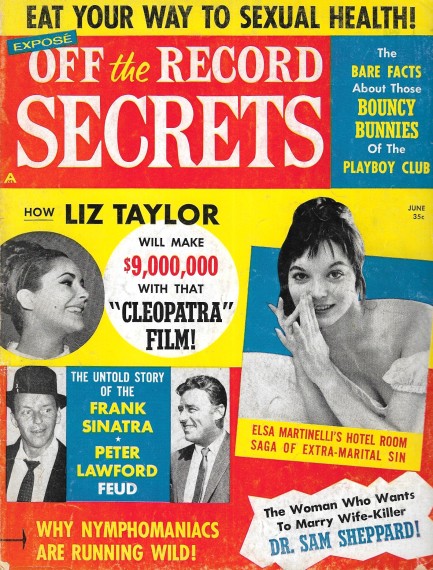
We have a brand new tabloid to our website today—the colorful Off the Record Secrets, of which you see its June 1963 cover above. This was published by an outfit calling itself Magazette, Inc., which aimed for the high end of the tabloid market with bright fronts along the same lines as the big boys Confidential, Whisper, Hush Hush, et al. Like those, Off the Record Secrets covers miles of ground between its pages, spilling on everyone from Hugh Hefner and his Bunnies, to Frank Sinatra and his Pack, to Elsa Martinelli and her hubby Franco Mancinelli Scotti, to Kirk Douglas and his bad behavior.
Of the items on offer, we were struck by the photo of Annette Stroyberg stuffing her face. We always thought trying to catch celebrities eating in embarrassing fashion started with the internet gossip sites, but apparently we were wrong. In any case you can see why the best restaurants have private dining rooms. Stroyberg must have been furious. Also of note, you Cary Grant fans get see him in a towel at age sixty-one. He's holding together nicely, though there seems to be some stomach sucking going on. Still, nothing to be ashamed of. He's got ninety-five percent of men his age beat.
The earliest issue we've seen of Off the Record Secrets is from January 1962. By the early 1960s the tabloid market was crowded, therefore owing at least partly to a logjam on newsstands, this magazine lasted only into 1964 before folding its tent. Because of its scarcity issues sometimes go for hefty prices. We got ours for $19.00. But we've seen them auctioning for $75.00. The high pricing means we may not buy another example for a while, but we'll get it done. In the meantime, get acquainted with Off the Record Secrets. We have multiple rare images for you below.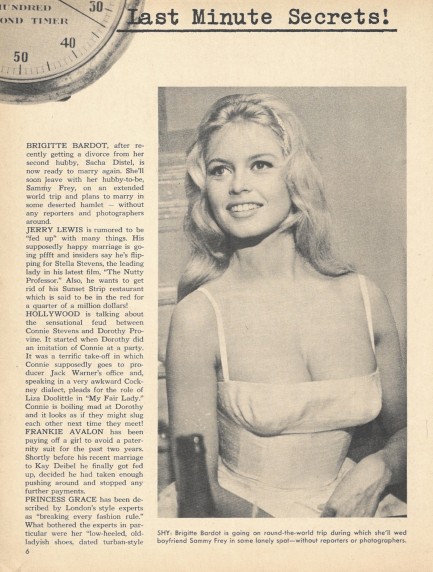
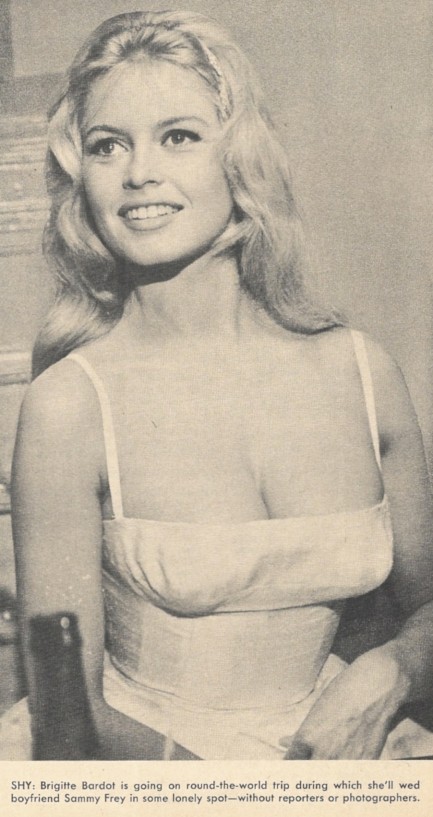
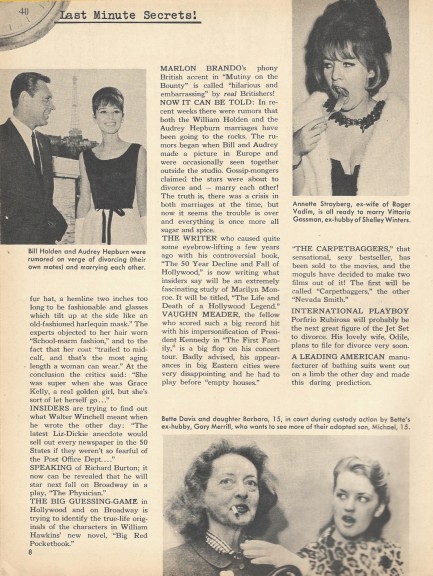


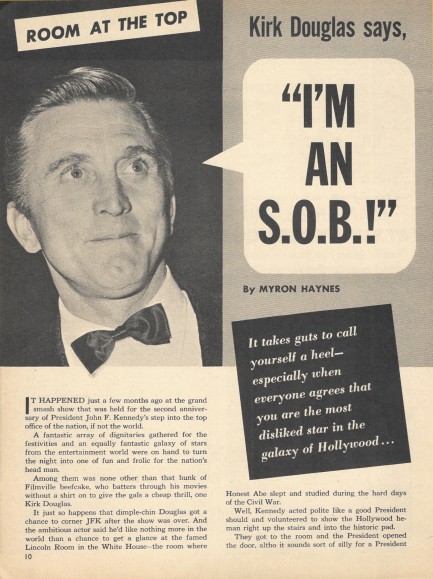
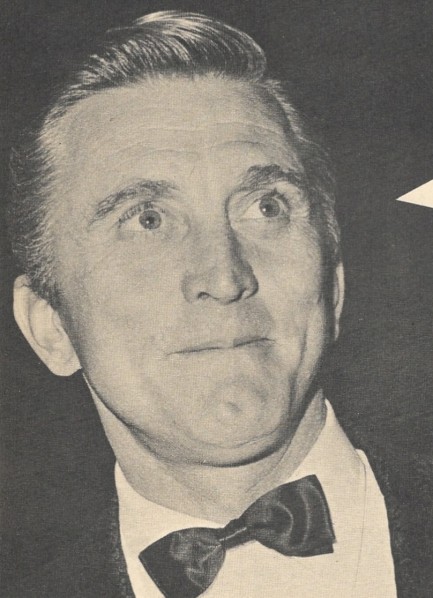
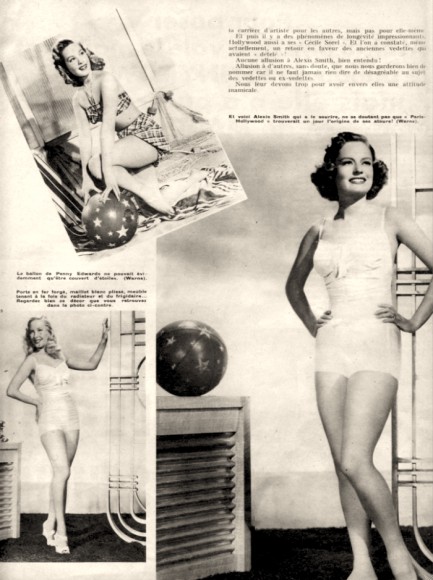
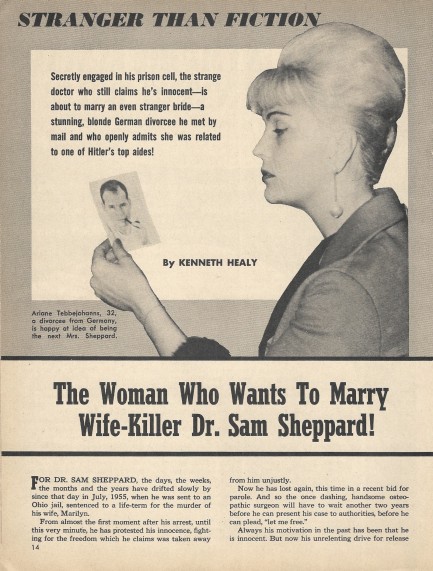
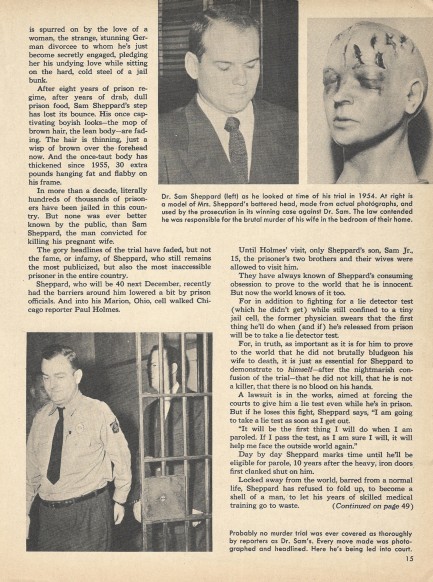
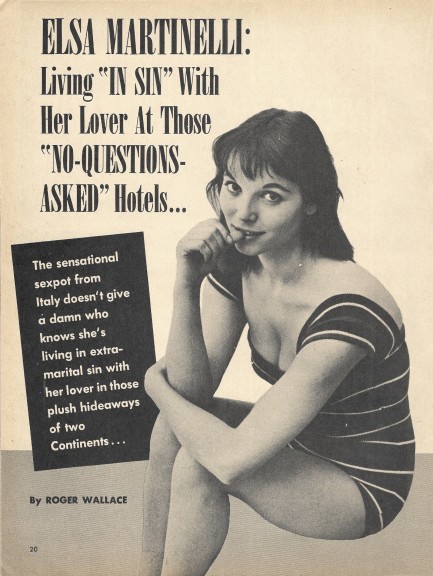
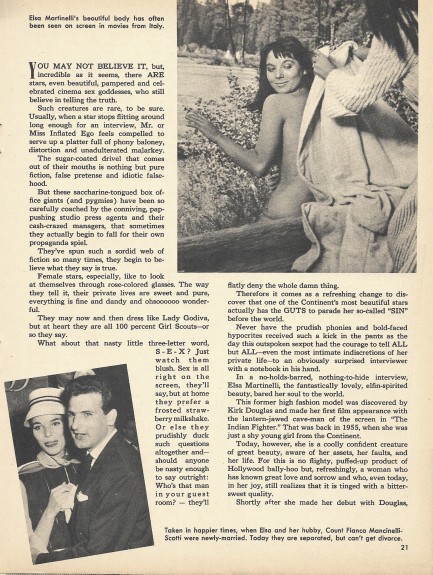
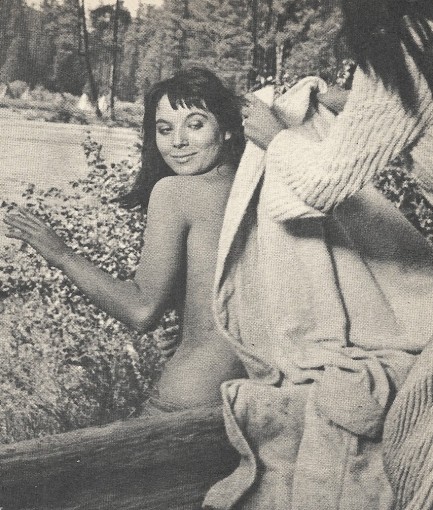
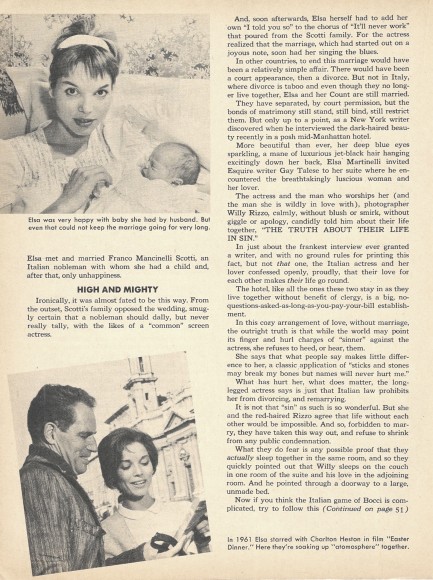
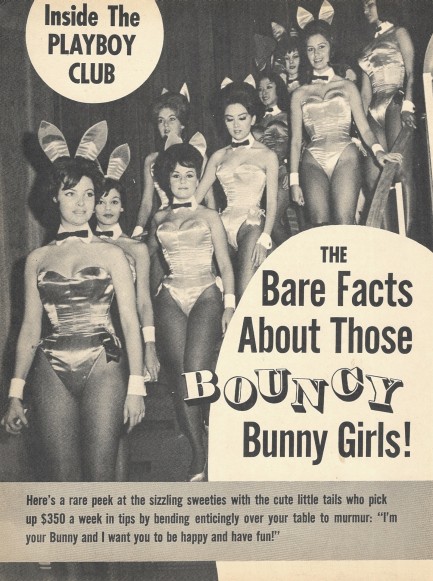
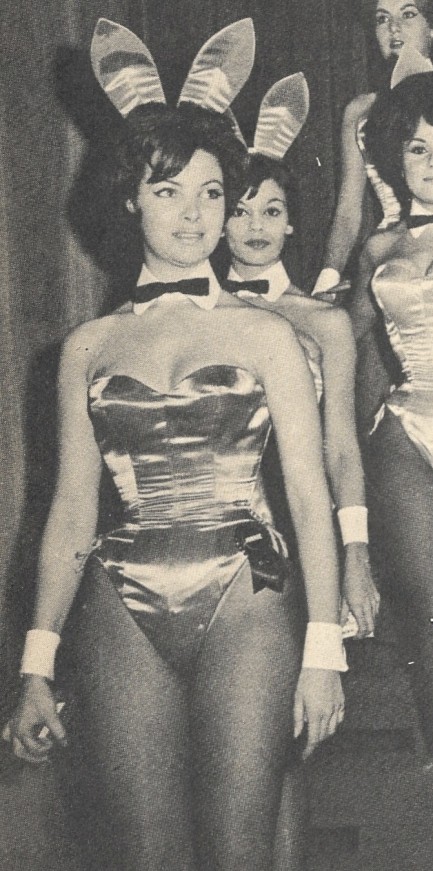
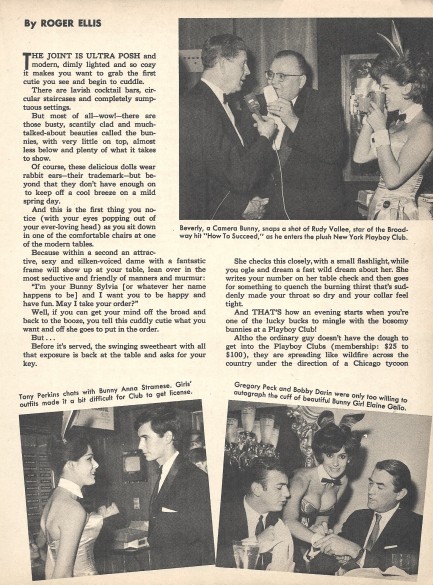
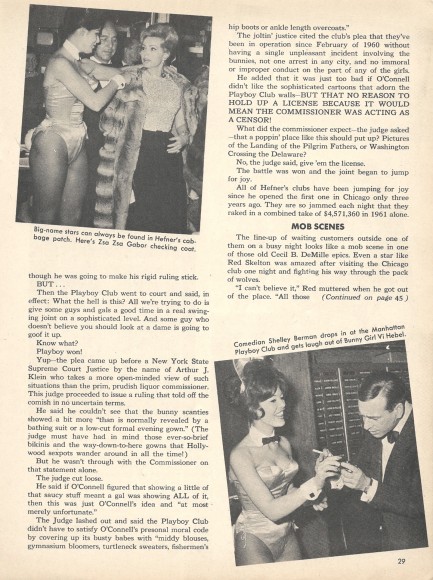
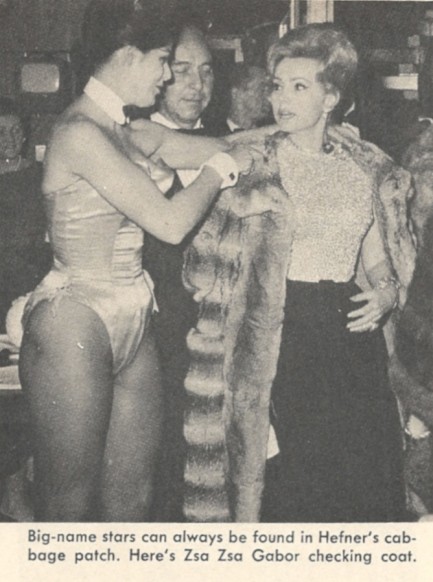
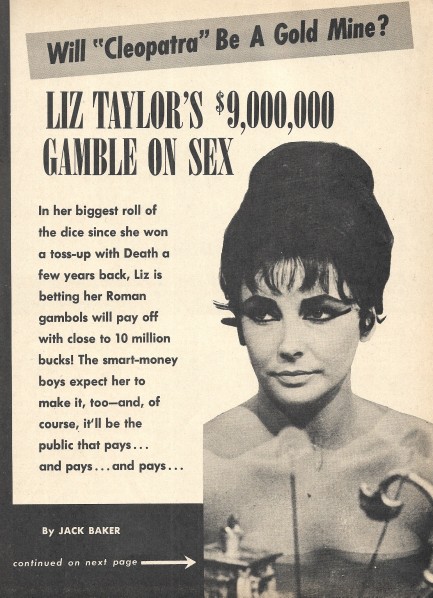
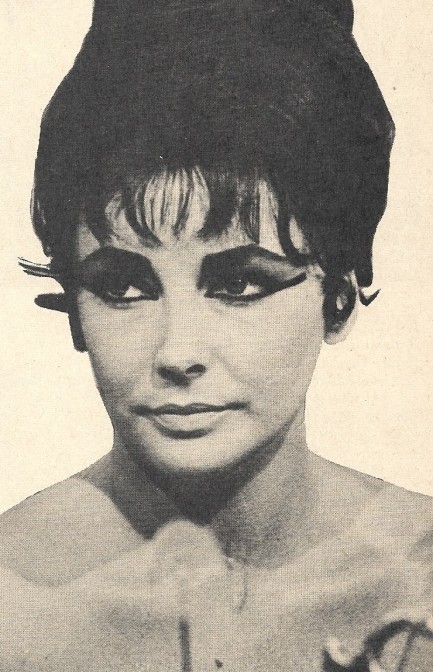
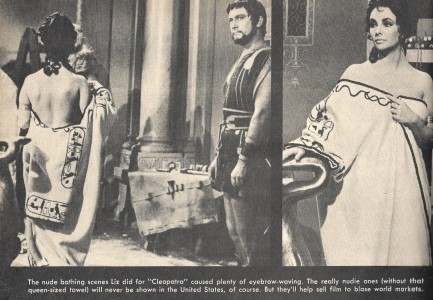
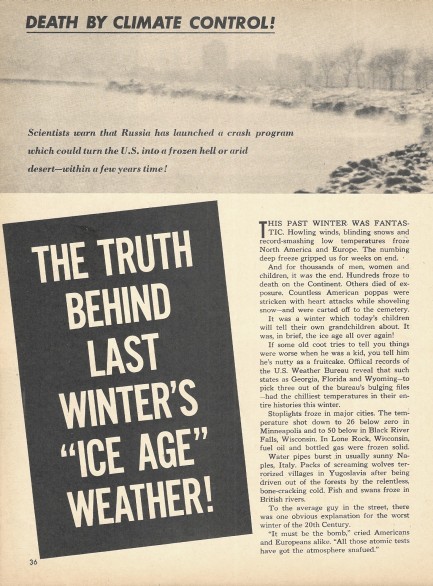
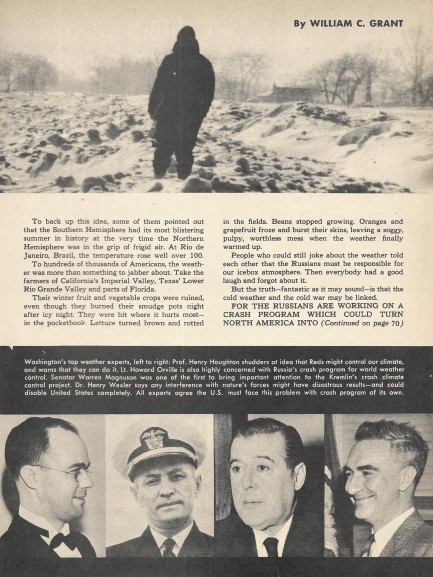
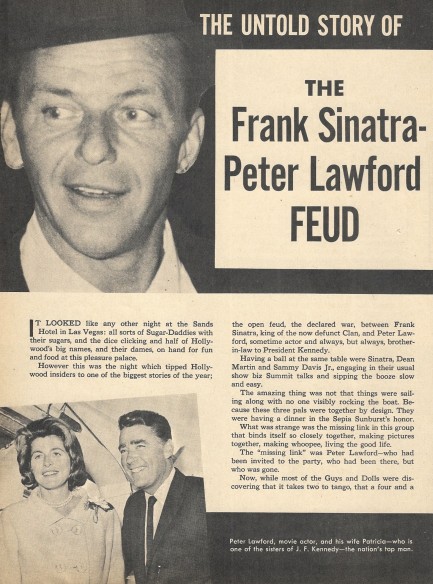
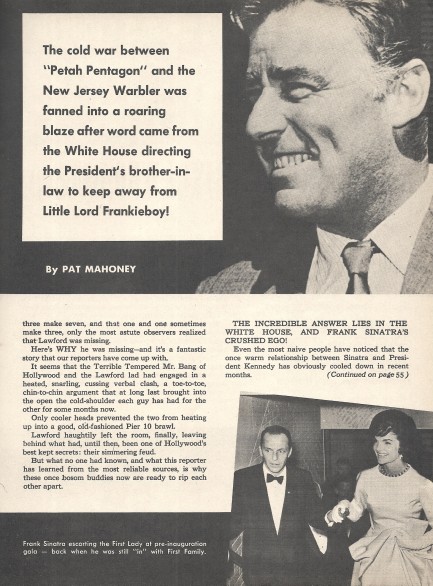
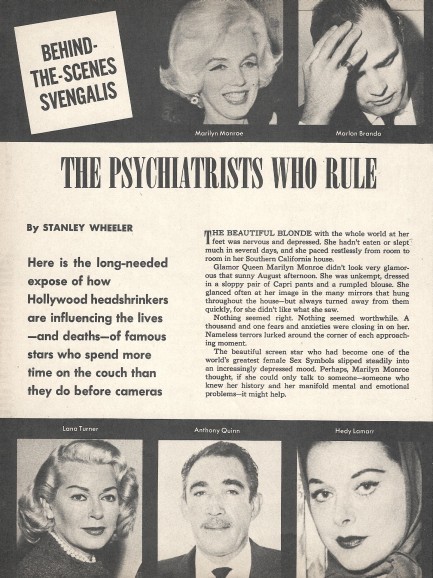
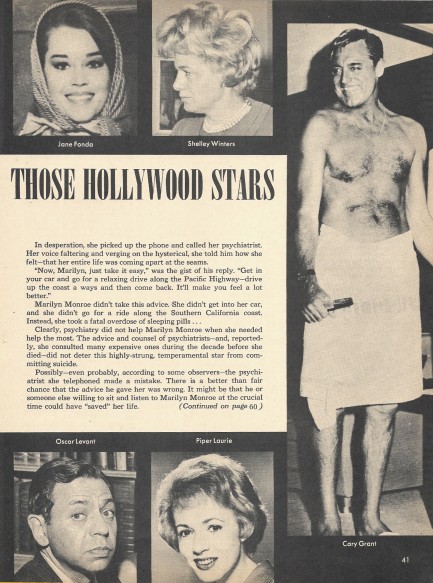

| Hollywoodland | May 22 2021 |

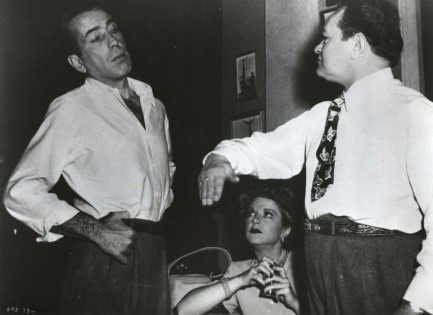
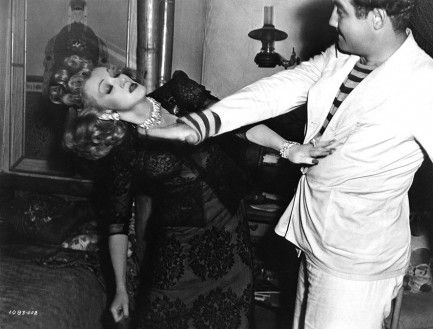 Broderick Crawford slaps Marlene Dietrich in the 1940's Seven Sinners.
Broderick Crawford slaps Marlene Dietrich in the 1940's Seven Sinners.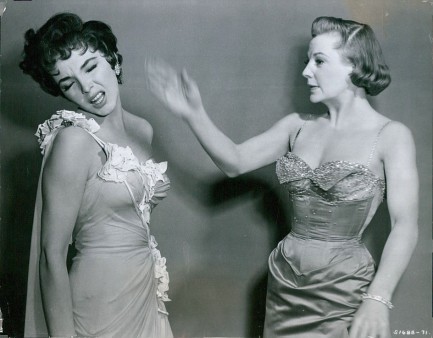 June Allyson lets Joan Collins have it across the kisser in a promo image for The Opposite Sex, 1956.
June Allyson lets Joan Collins have it across the kisser in a promo image for The Opposite Sex, 1956.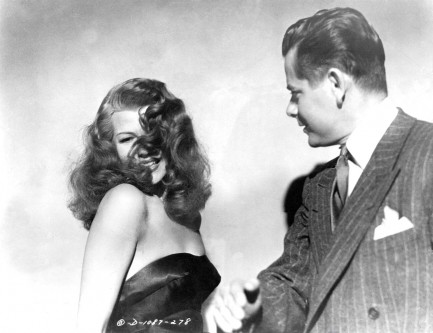 Speaking of Gilda, here's one of Glenn Ford and Rita Hayworth re-enacting the slap heard round the world. Hayworth gets to slap Ford too, and according to some accounts she loosened two of his teeth. We don't know if that's true, but if you watch the sequence it is indeed quite a blow. 100% real. We looked for a photo of it but had no luck.
Speaking of Gilda, here's one of Glenn Ford and Rita Hayworth re-enacting the slap heard round the world. Hayworth gets to slap Ford too, and according to some accounts she loosened two of his teeth. We don't know if that's true, but if you watch the sequence it is indeed quite a blow. 100% real. We looked for a photo of it but had no luck.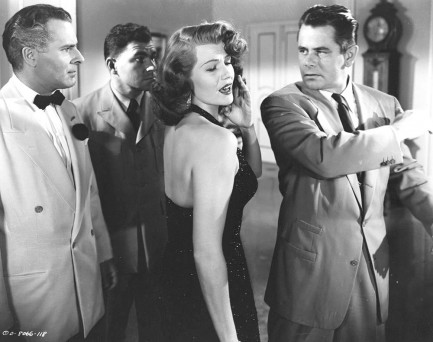 Don't mess with box office success. Ford and Hayworth did it again in 1952's Affair in Trinidad.
Don't mess with box office success. Ford and Hayworth did it again in 1952's Affair in Trinidad.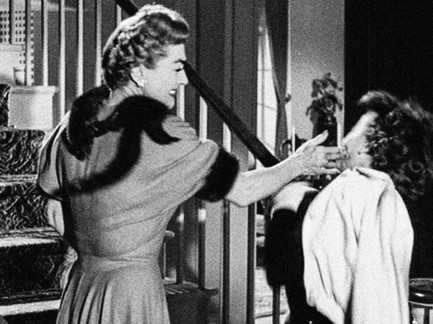 All-time film diva Joan Crawford gets in a good shot on Lucy Marlow in 1955's Queen Bee.
All-time film diva Joan Crawford gets in a good shot on Lucy Marlow in 1955's Queen Bee.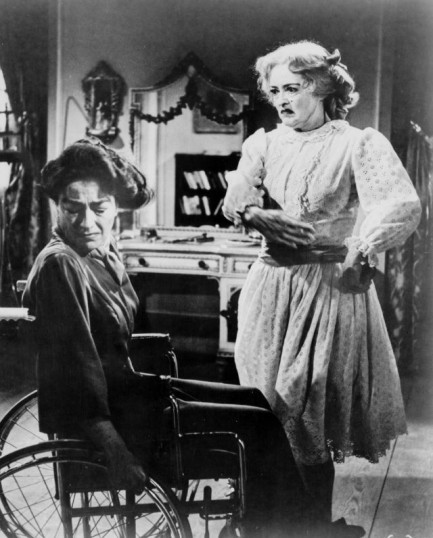 The answer to the forthcoming question is: She turned into a human monster, that's what. Joan Crawford is now on the receiving end, with Bette Davis issuing the slap in Whatever Happened to Baby Jane? Later Davis kicks Crawford, so the slap is just a warm-up.
The answer to the forthcoming question is: She turned into a human monster, that's what. Joan Crawford is now on the receiving end, with Bette Davis issuing the slap in Whatever Happened to Baby Jane? Later Davis kicks Crawford, so the slap is just a warm-up.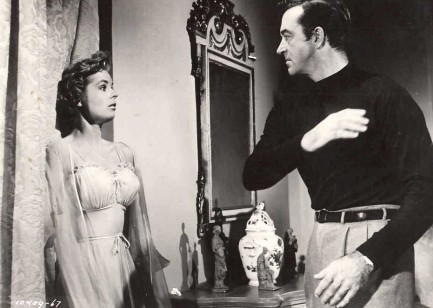 Mary Murphy awaits the inevitable from John Payne in 1955's Hell's Island.
Mary Murphy awaits the inevitable from John Payne in 1955's Hell's Island.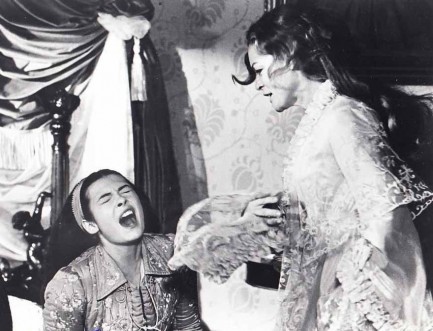 Romy Schneider slaps Sonia Petrova in 1972's Ludwig.
Romy Schneider slaps Sonia Petrova in 1972's Ludwig.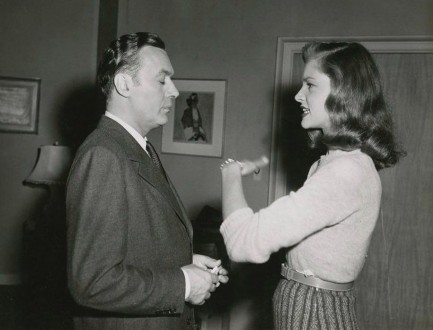 Lauren Bacall lays into Charles Boyer in 1945's Confidential Agent and garnishes the slap with a brilliant snarl.
Lauren Bacall lays into Charles Boyer in 1945's Confidential Agent and garnishes the slap with a brilliant snarl.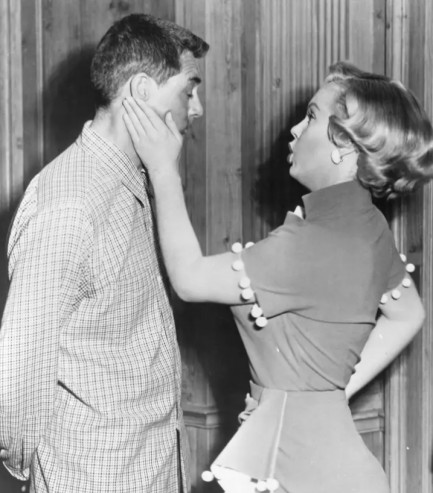 Iconic bombshell Marilyn Monroe drops a smart bomb on Cary Grant in the 1952 comedy Monkey Business.
Iconic bombshell Marilyn Monroe drops a smart bomb on Cary Grant in the 1952 comedy Monkey Business.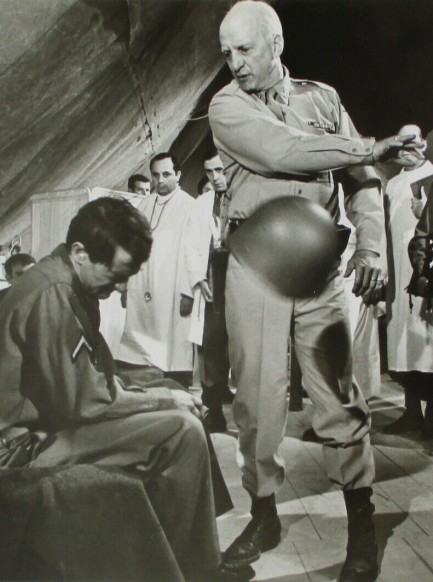 This is the most brutal slap of the bunch, we think, from 1969's Patton, as George C. Scott de-helmets an unfortunate soldier played by Tim Considine.
This is the most brutal slap of the bunch, we think, from 1969's Patton, as George C. Scott de-helmets an unfortunate soldier played by Tim Considine.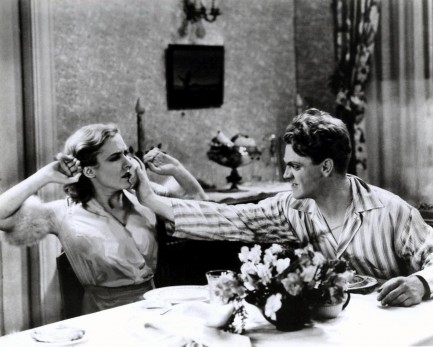 A legendary scene in filmdom is when James Cagney shoves a grapefruit in Mae Clark's face in The Public Enemy. Is it a slap? He does it pretty damn hard, so we think it's close enough. They re-enact that moment here in a promo photo made in 1931.
A legendary scene in filmdom is when James Cagney shoves a grapefruit in Mae Clark's face in The Public Enemy. Is it a slap? He does it pretty damn hard, so we think it's close enough. They re-enact that moment here in a promo photo made in 1931.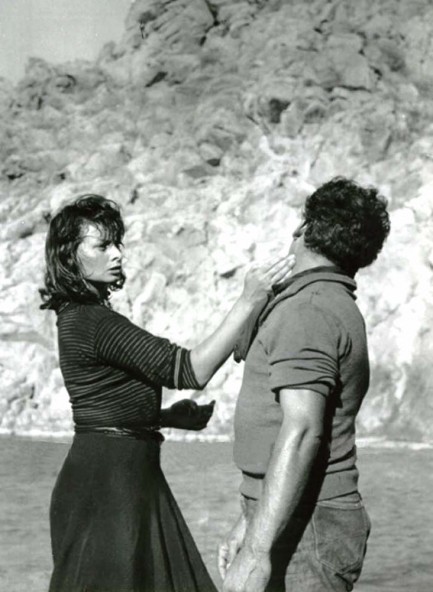 Sophia Loren gives Jorge Mistral a scenic seaside slap in 1957's Boy on a Dolphin.
Sophia Loren gives Jorge Mistral a scenic seaside slap in 1957's Boy on a Dolphin.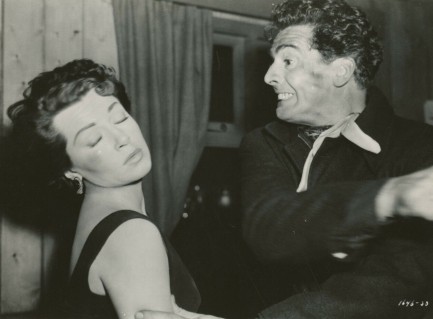 Victor Mature fails to live up to his last name as he slaps Lana Turner in 1954's Betrayed.
Victor Mature fails to live up to his last name as he slaps Lana Turner in 1954's Betrayed.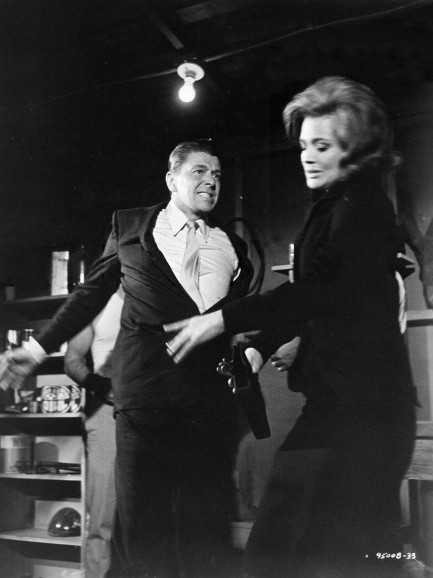 Ronald Reagan teaches Angie Dickinson how supply side economics work in 1964's The Killers.
Ronald Reagan teaches Angie Dickinson how supply side economics work in 1964's The Killers.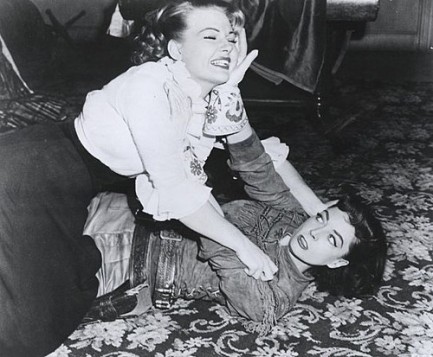 Marie Windsor gets in one against Mary Castle from the guard position in an episode of television's Stories of the Century in 1954. Windsor eventually won this bout with a rear naked choke.
Marie Windsor gets in one against Mary Castle from the guard position in an episode of television's Stories of the Century in 1954. Windsor eventually won this bout with a rear naked choke. It's better to give than receive, but sadly it's Bette Davis's turn, as she takes one from Dennis Morgan in In This Our Life, 1942.
It's better to give than receive, but sadly it's Bette Davis's turn, as she takes one from Dennis Morgan in In This Our Life, 1942.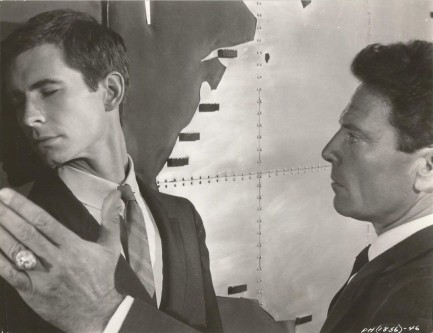 Anthony Perkins and Raf Vallone dance the dance in 1962's Phaedra, with Vallone taking the lead.
Anthony Perkins and Raf Vallone dance the dance in 1962's Phaedra, with Vallone taking the lead.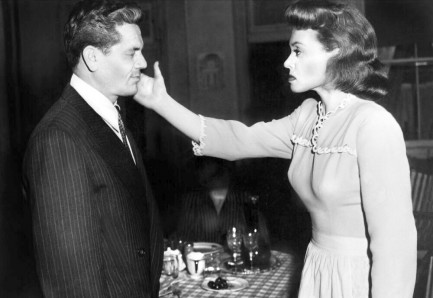 And he thought being inside the ring was hard. Lilli Palmer nails John Garfield with a roundhouse right in the 1947 boxing classic Body and Soul.
And he thought being inside the ring was hard. Lilli Palmer nails John Garfield with a roundhouse right in the 1947 boxing classic Body and Soul.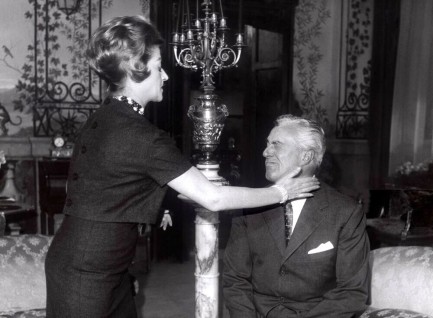 1960's Il vigile, aka The Mayor, sees Vittorio De Sica rebuked by a member of the electorate Lia Zoppelli. She's more than a voter in this—she's also his wife, so you can be sure he deserved it.
1960's Il vigile, aka The Mayor, sees Vittorio De Sica rebuked by a member of the electorate Lia Zoppelli. She's more than a voter in this—she's also his wife, so you can be sure he deserved it. Brigitte Bardot delivers a not-so-private slap to Dirk Sanders in 1962's Vie privée, aka A Very Private Affair.
Brigitte Bardot delivers a not-so-private slap to Dirk Sanders in 1962's Vie privée, aka A Very Private Affair.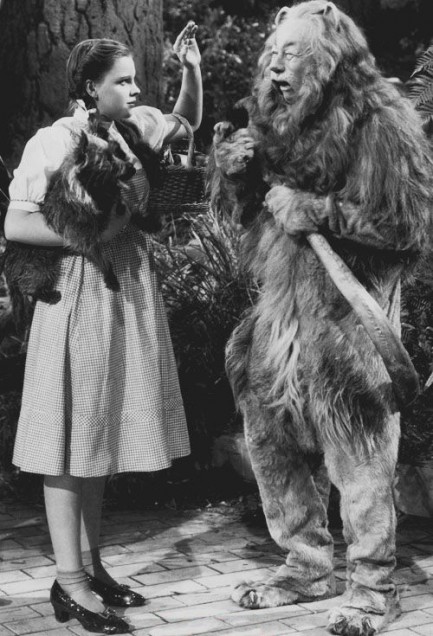 In a classic case of animal abuse. Judy Garland gives cowardly lion Bert Lahr a slap on the nose in The Wizard of Oz. Is it his fault he's a pussy? Accept him as he is, Judy.
In a classic case of animal abuse. Judy Garland gives cowardly lion Bert Lahr a slap on the nose in The Wizard of Oz. Is it his fault he's a pussy? Accept him as he is, Judy.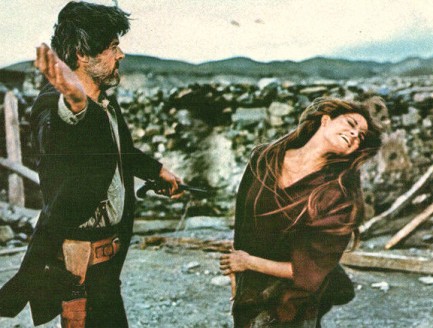 Robert Culp backhands Raquel Welch in 1971's Hannie Caudler.
Robert Culp backhands Raquel Welch in 1971's Hannie Caudler.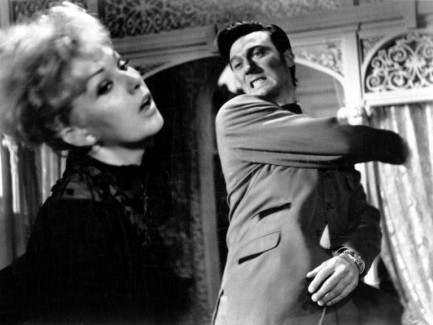 And finally, Laurence Harvey dares to lay hands on the perfect Kim Novak in Of Human Bondage.
And finally, Laurence Harvey dares to lay hands on the perfect Kim Novak in Of Human Bondage. | Vintage Pulp | Oct 28 2017 |

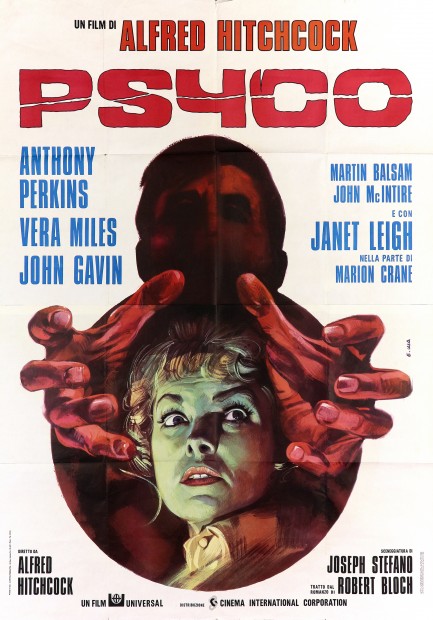
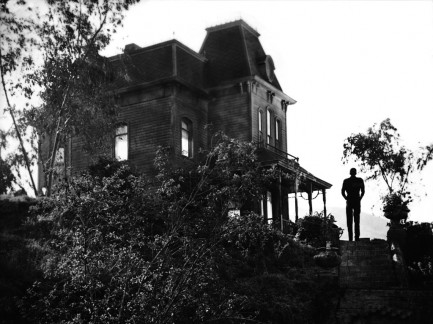
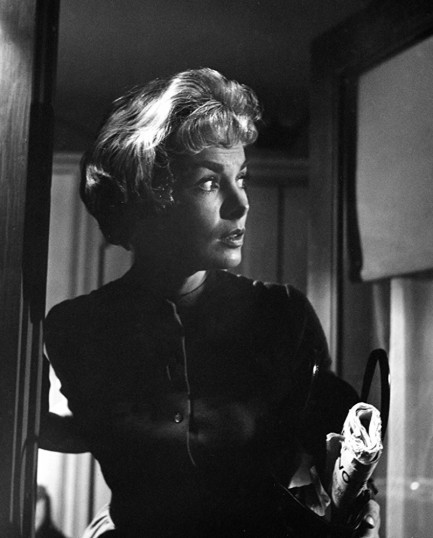

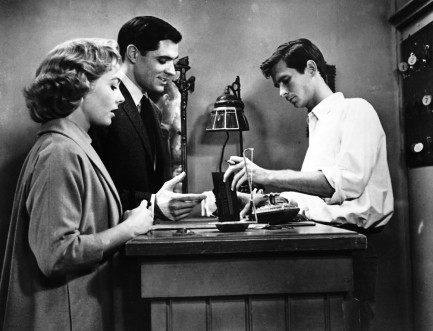
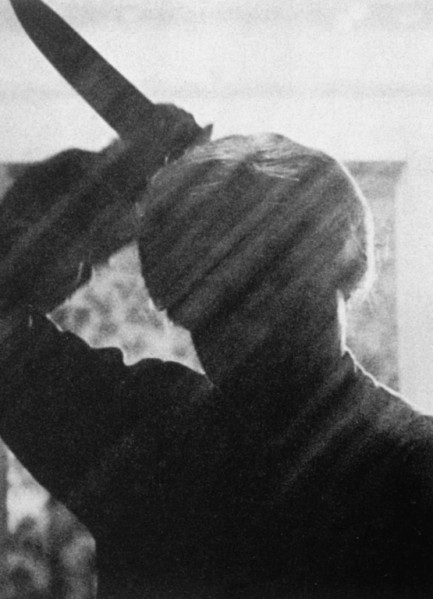
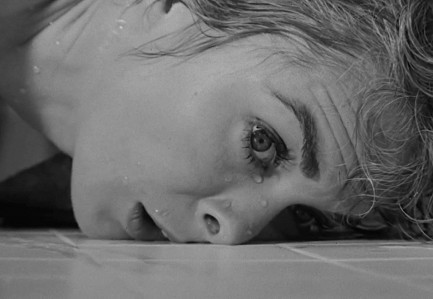
| Hollywoodland | Sep 15 2015 |

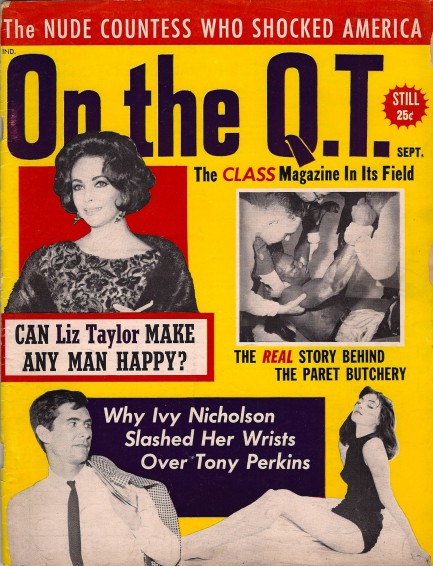
On the Q.T. labeled itself “The class magazine in its field.” In practice that was less than true. This cover from September 1962 offers teasers about Liz Taylor’s inability to be made happy, the fatal ring beating of boxer Kid Paret, and the inside story about Ivy Nicholson’s suicide attempt. But the banner goes to the nude countess who shocked America. That would be Christina Paolozzi, aka Christina Bellin, who was a New York City fashion model and the offspring of United Fruit Company heiress Alicia Spaulding and Italian conte Lorenzo Paolozzi. The photo was shot by Richard 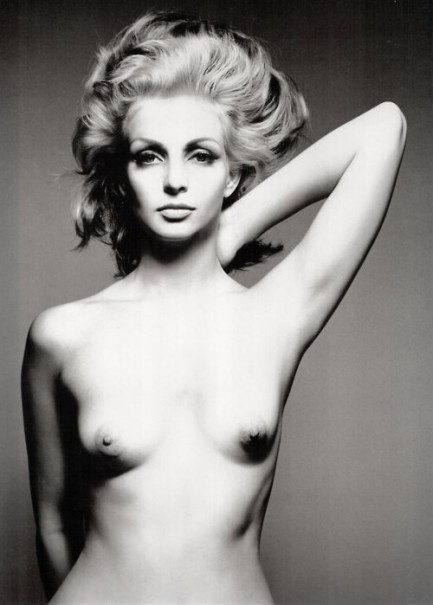 Avedon and appeared in Harper’s Bazaar. Paolozzi was already considered “the first of the ’60s free spirits” by the tabloids, and by stripping for Avedon she became the first recognized fashion model to pose nude, a practice that is now common.
Avedon and appeared in Harper’s Bazaar. Paolozzi was already considered “the first of the ’60s free spirits” by the tabloids, and by stripping for Avedon she became the first recognized fashion model to pose nude, a practice that is now common.
While Avedon earned widespread recognition for the shot, which you see at right, Paolozzi was dropped from the New York City Social Register, shunned by Manhattan’s upper crust, and subjected in the press to what is today sometimes called “body shaming.” Columnist Inez Robb wrote that Paolozzi was “no more favored by nature than the average daughter of Eve,” and added for good measure, “Harper’s Bazaar, with its excursion into overexposure, has unwittingly proved that not diamonds but clothes are a girl’s best friend.” If that wasn’t bad enough, just imagine what people wrote in the comments section. They had those then, right?
In any case, Paolozzi was a bold personality, and she went on to make waves yet again with her many wild parties and open marriage to cosmetic surgeon Howard Bellin, commenting in a mid-1970s newspaper article, “[It’s] just the way life is today—one man is simply not enough.” But she didn’t just spend the years having a good time. She also raised money for hospitals in Cambodia and Gabon, orphanages in Afghanistan, and supported eighteen foster children. In a sense, she gave the shirt off her back. Twenty-eight scans from On the Q.T. below.
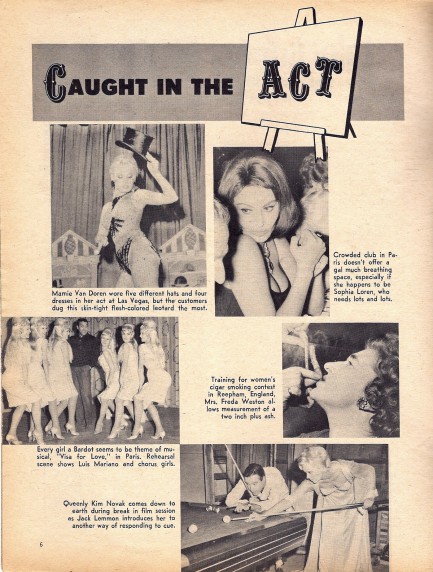
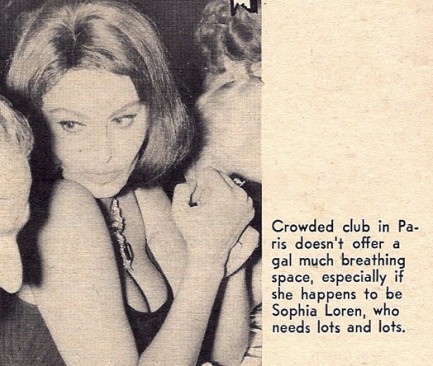
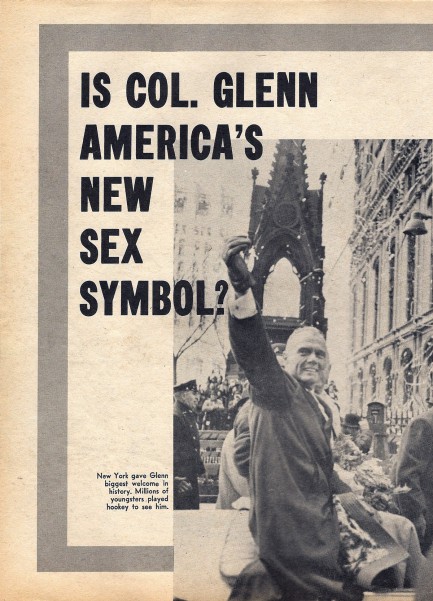
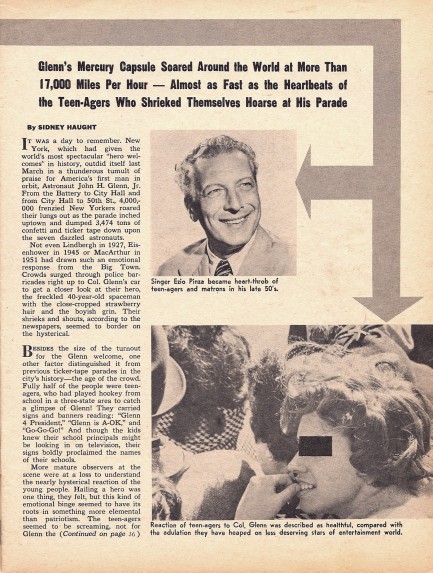
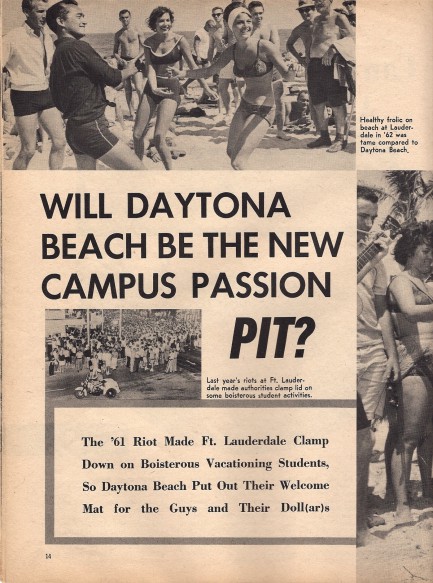
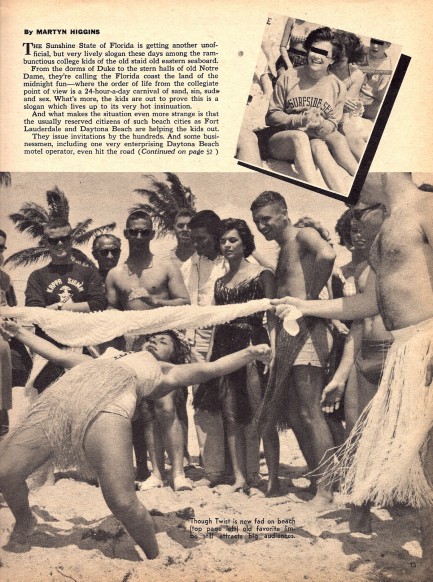
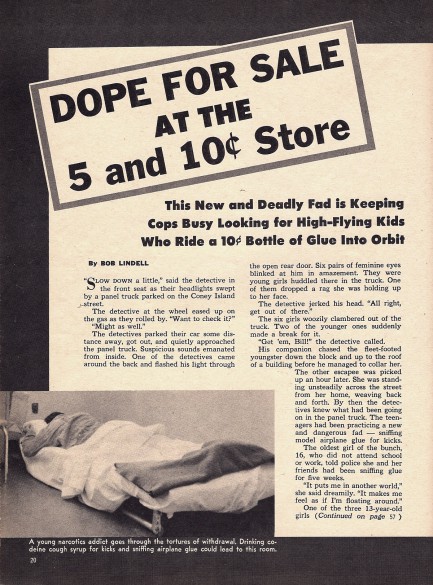
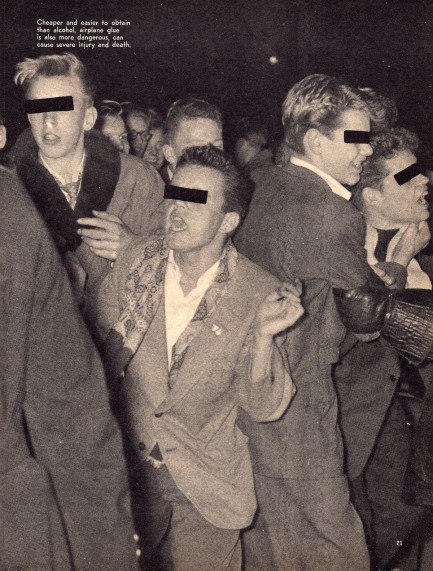
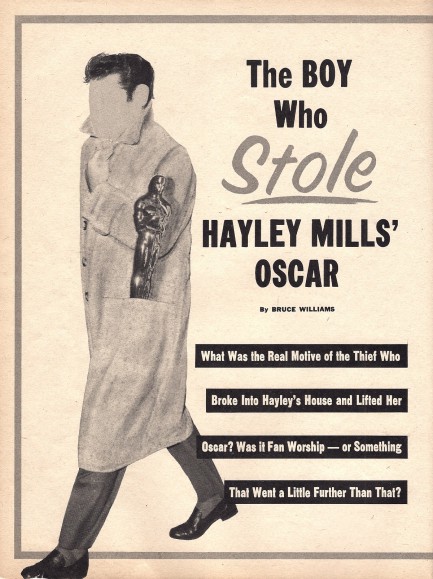
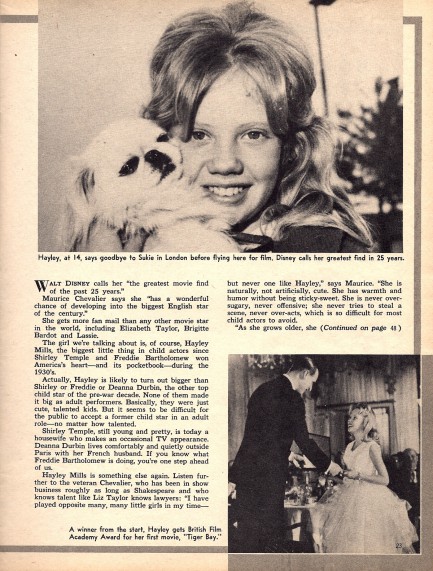
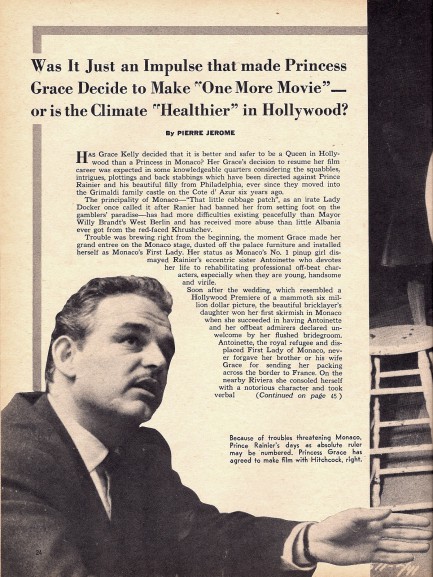
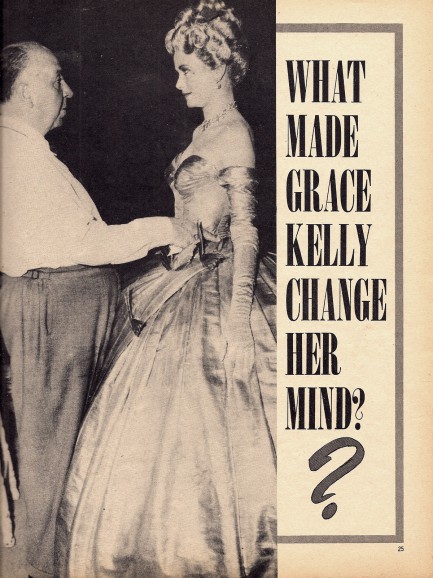
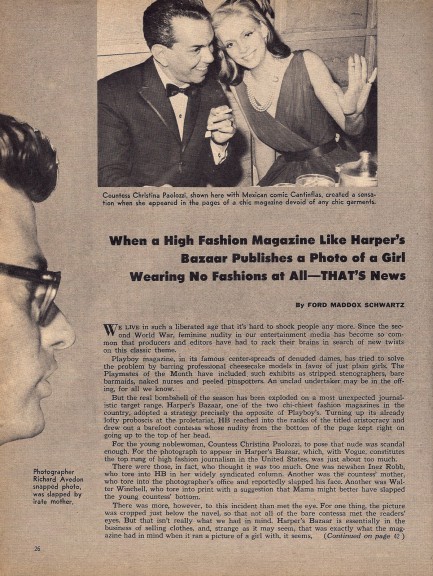
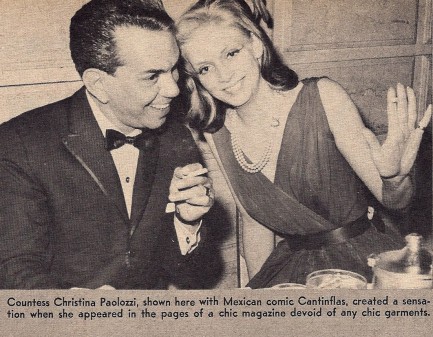
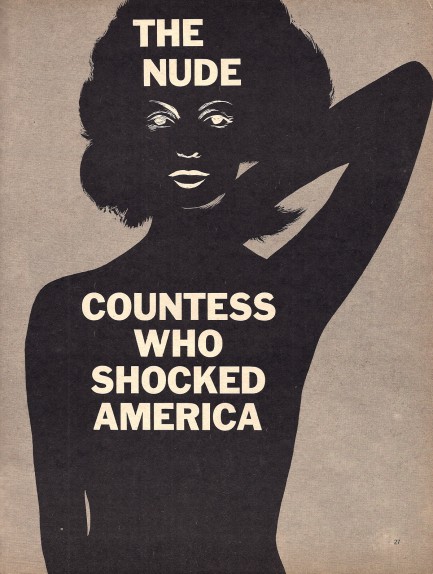
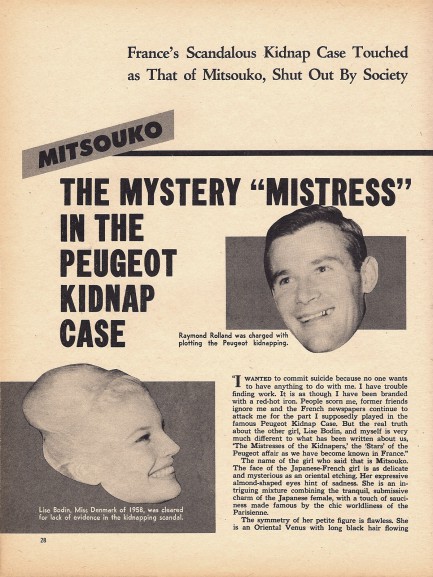
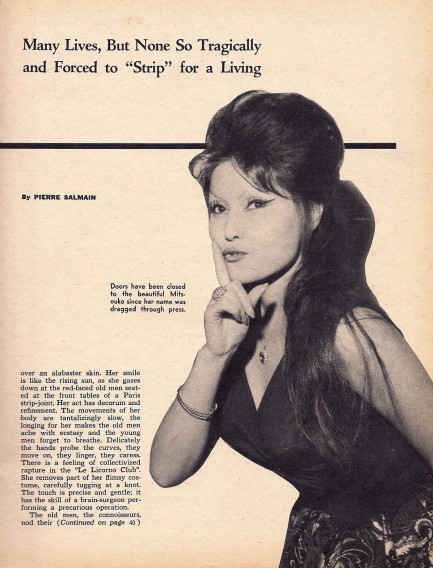
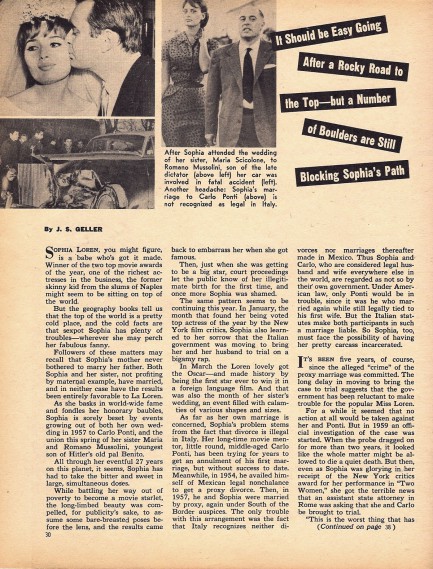
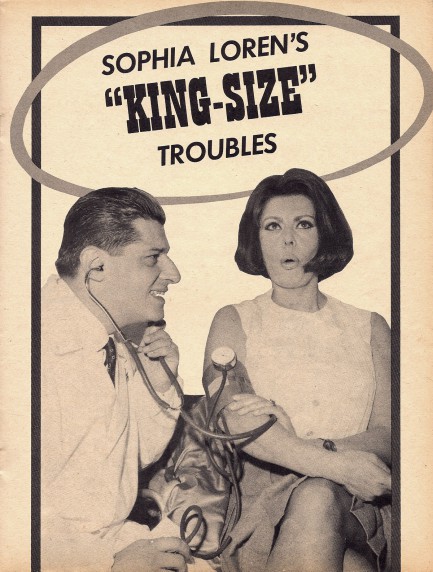
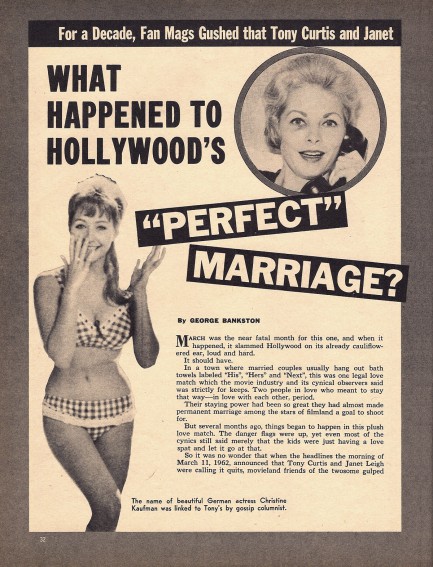
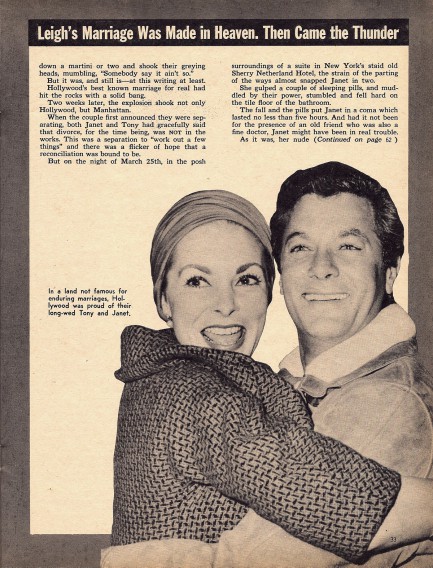
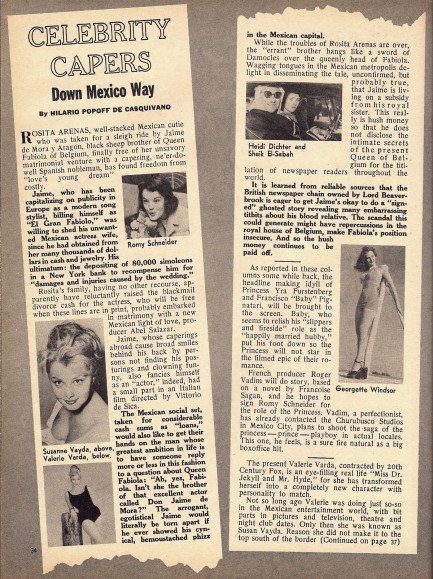
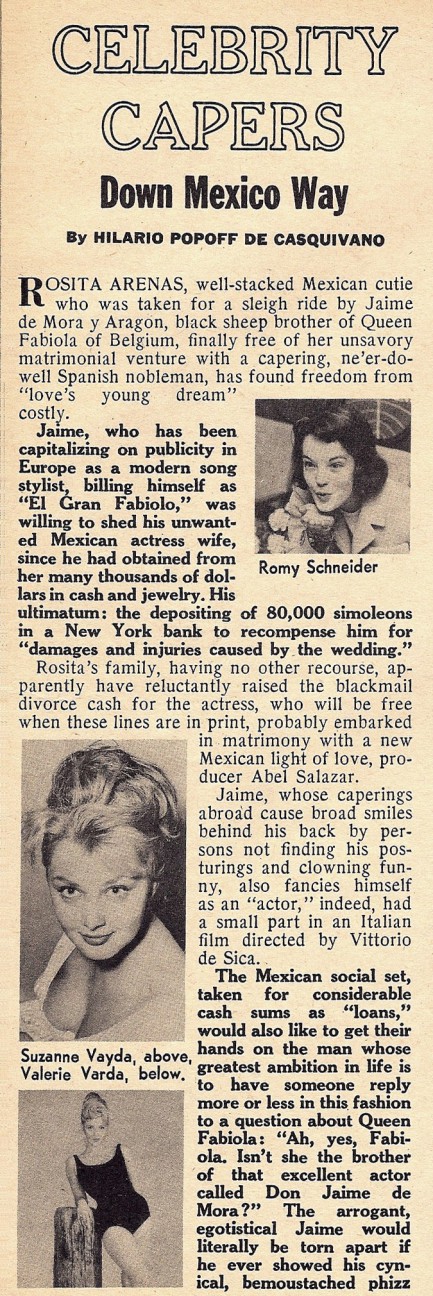
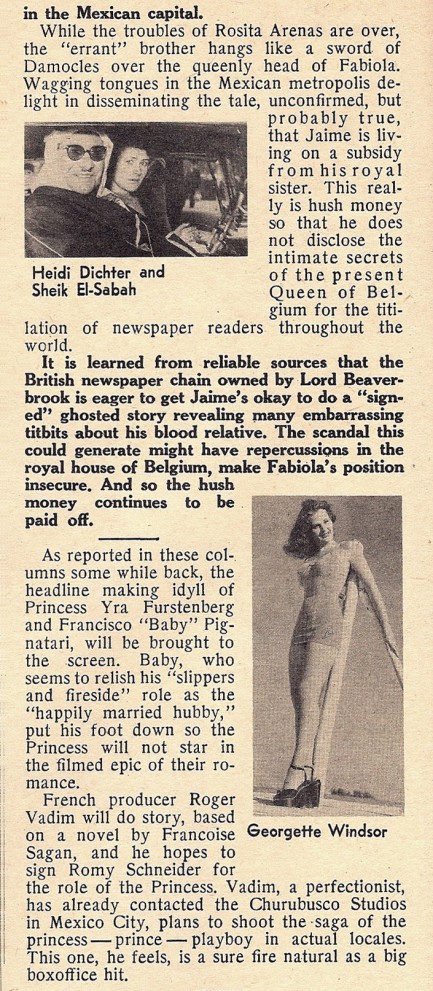
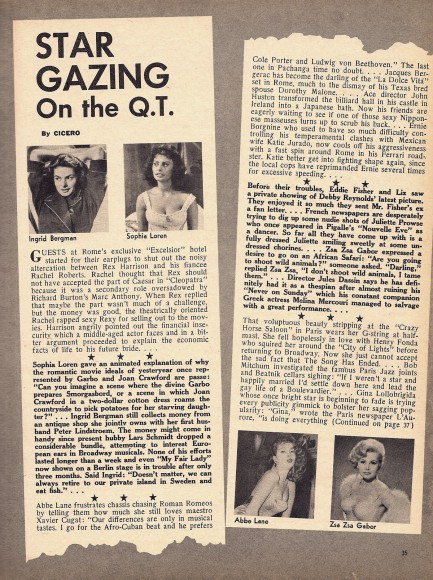
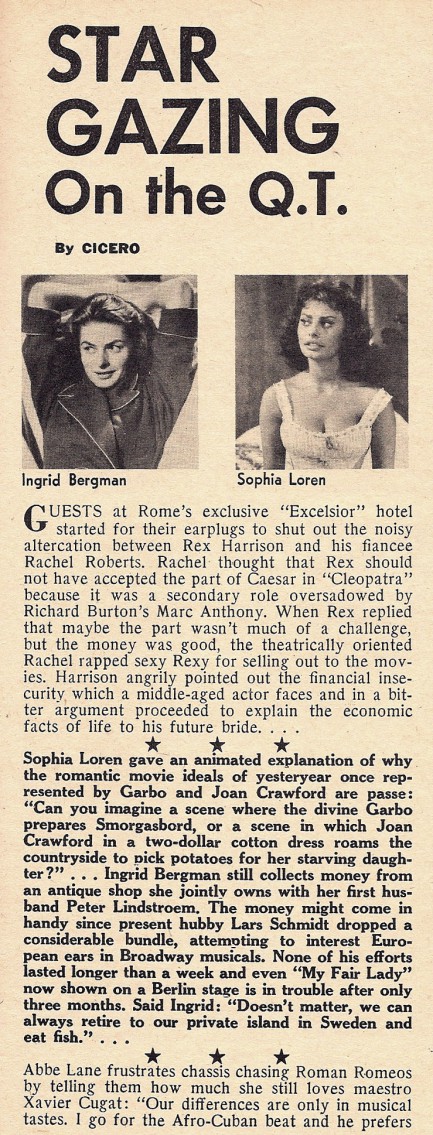
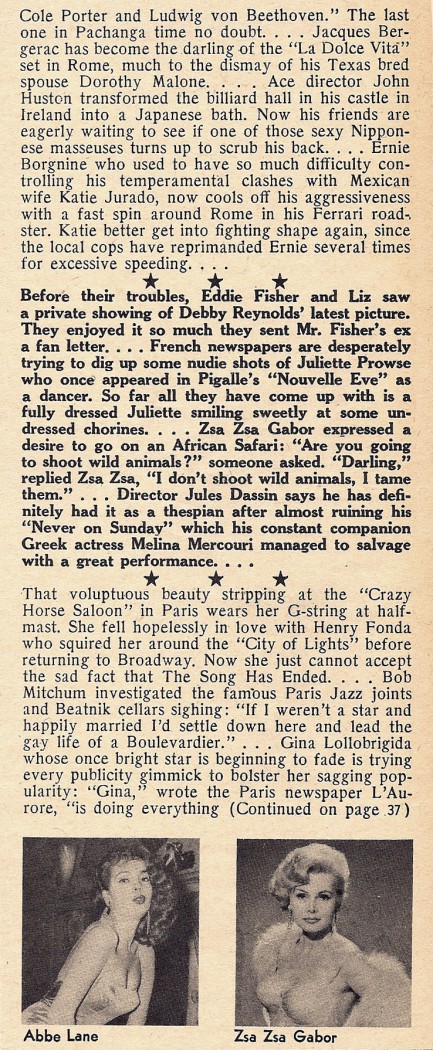
| Vintage Pulp | Sep 18 2013 |

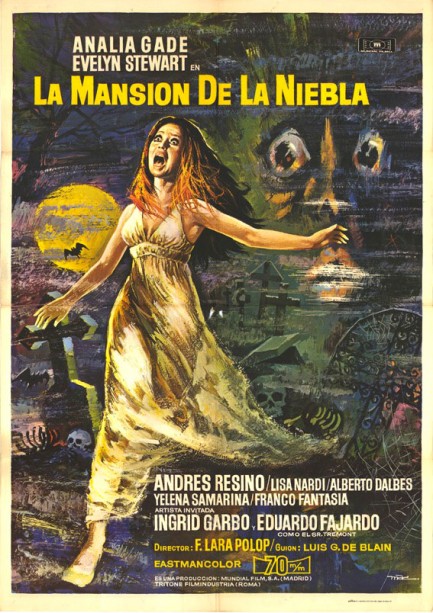
You can find plenty of amateur reviews of La mansion de la niebla, aka Murder Mansion, aka Maniac Mansion around the internet, so we won’t add another. We watched it, though, and basically, it’s about a bunch of people stranded in a fogbound manor house, and a plot to frighten one of them to death. Hope that didn’t give away too much. What really struck us was the poster, which was painted by an artist who signed his work Mac. Mac was short for Macario Gomez, and for four decades beginning in 1955 this Spanish painter created posters for such films as Dr. Zhivago, For a Few Dollars More, El Cid and others.
Gomez’s effort for La mansion de la niebla is a bit cheeseball, but we rather enjoy the numerous elements he managed to fit in, including a disembodied face, some skulls, a ribcage, a full moon, assorted gravestones, some random ironwork, a spider web, a bare tree, a couple of bats, and, of course, copious fog. Faced with all that, it’s no wonder the central figure is fleeing for her life. But just to show that Gomez really does have top tier talent, we’ve shared a few of his more successful posters below. La mansion de la niebla, an Italian/Spanish co-production, premiered as Quando Marta urlò dalla tomba in Italy, and in Spain six weeks later, today 1972.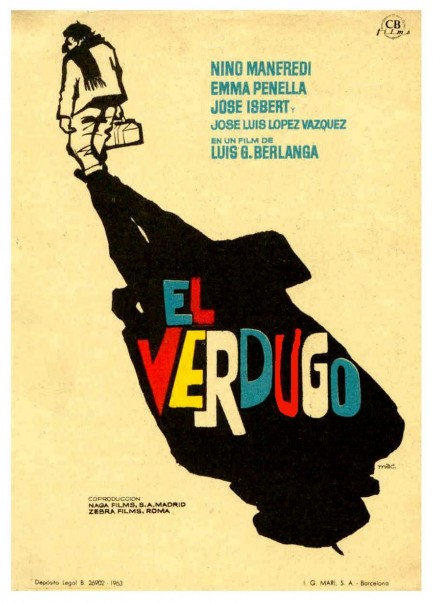
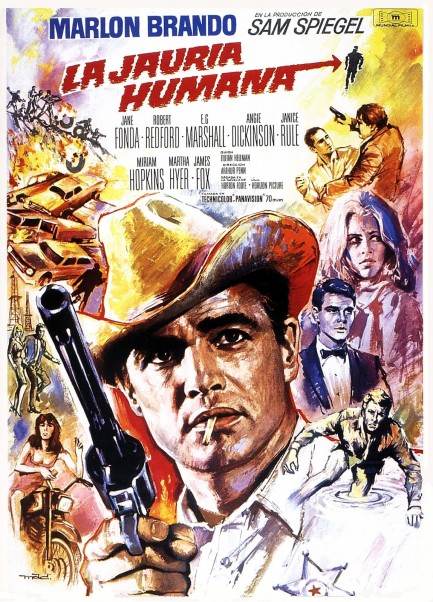
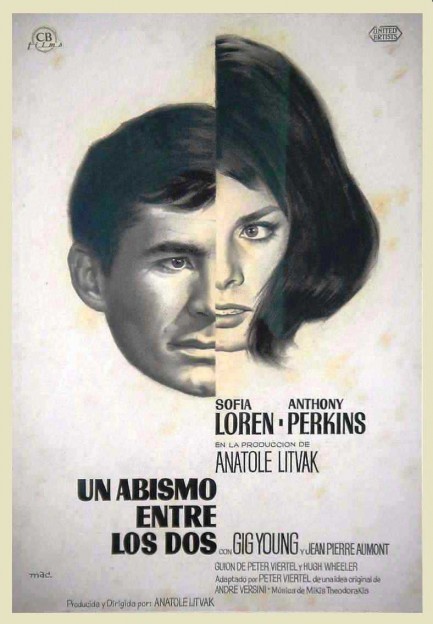
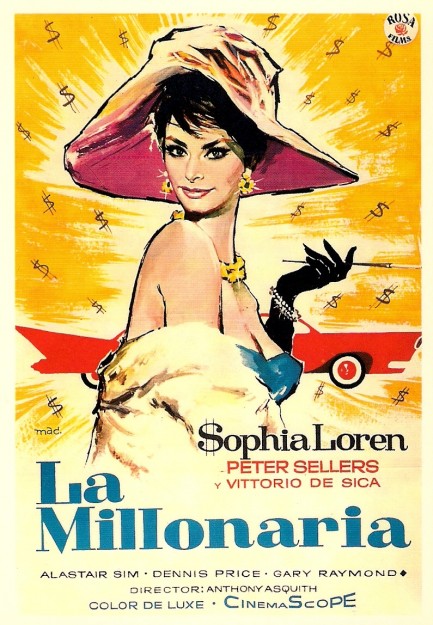
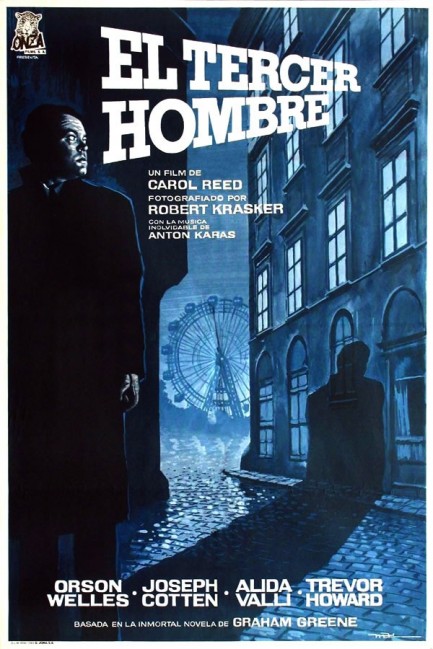
| Vintage Pulp | Dec 21 2011 |

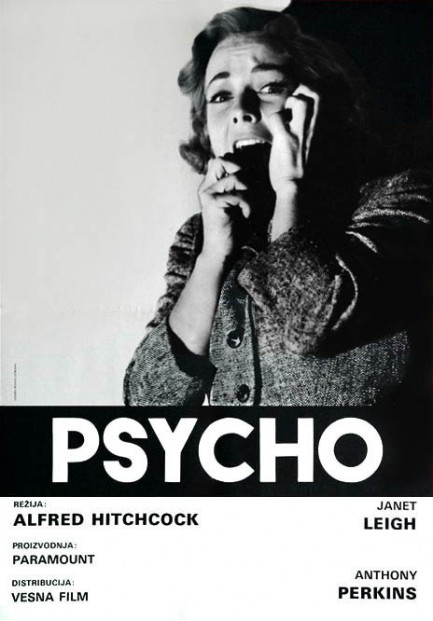
Here’s a rarity. It’s a poster from the former Yugoslavia (such items are commonly referred to as “Exyu”) for Alfred Hitchcock’s Psycho, featuring a photo, not of doomed Janet Leigh who met her end in the shower, but of Vera Miles, who plays Leigh’s sister. With the help of John Gavin, Miles ends up poking around the Bates Motel looking for clues to her sis’s disappearance. Safe to say she never expected what she found. See a Czech Psycho poster here.
| Hollywoodland | Oct 23 2009 |

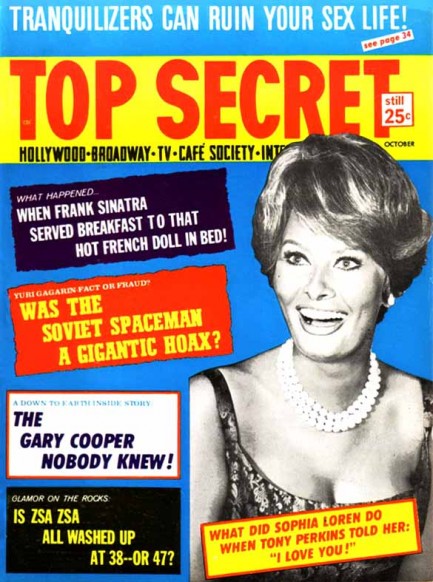
Here’s a colorful October 1961 issue of Top Secret, featuring cover star Sophia Loren, with text hinting that Anthony Perkins had a little thing for her. Perhaps, but Perkins was famously nervous around women, and was usually involved with men, including Rock Hudson and Rudolph Nureyev. He rebuffed advances from both Jane Fonda and Brigitte Bardot, before finally losing his heterosexual virginity to Victoria Principal and going on to marry photographer Berry Berenson. You also see a blurb on Yuri Gagarin, who we mentioned a few days ago. Top Secret claims the Soviets didn’t have the technical know-how to send Gagarin on a revolution of the Earth. Yet somehow, they believed the Soviets did have the know-how to send missiles raining down on American cities. You ever get the feeling they just made this stuff up?
| Vintage Pulp | Jul 31 2009 |

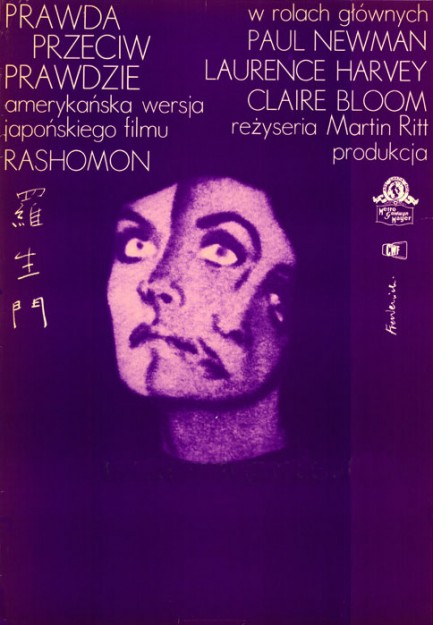
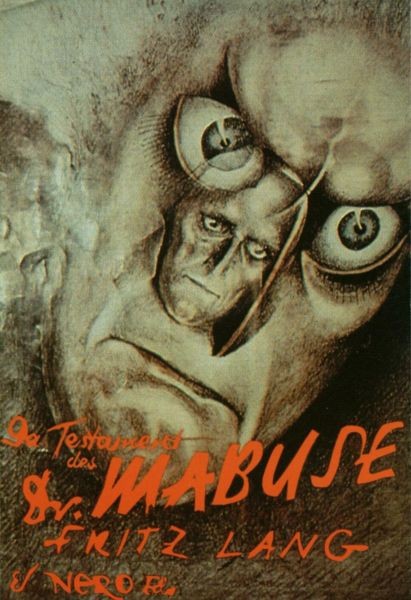
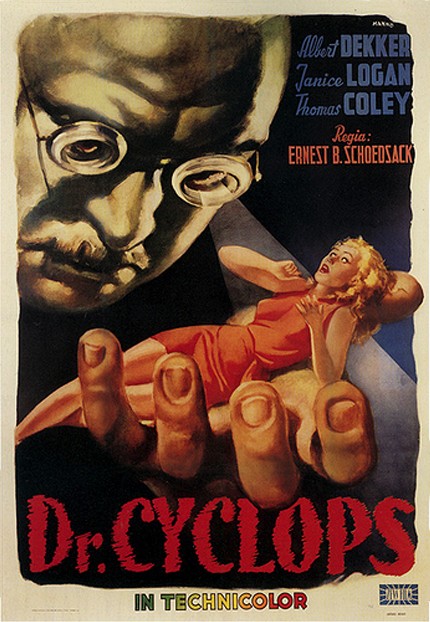
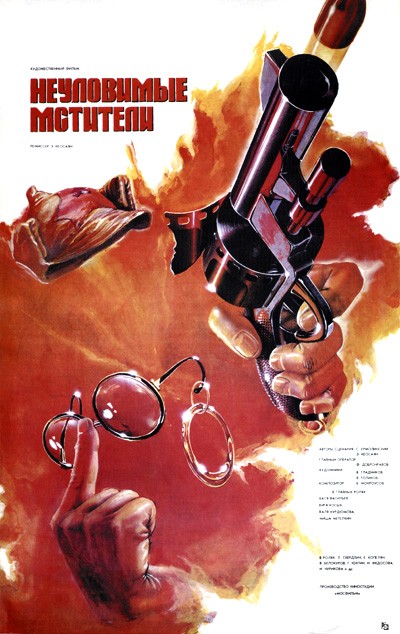
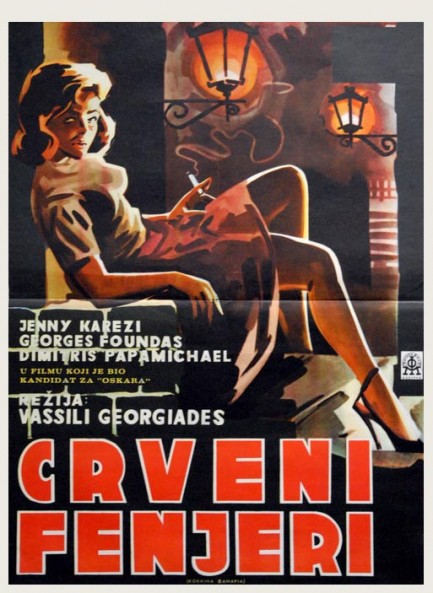
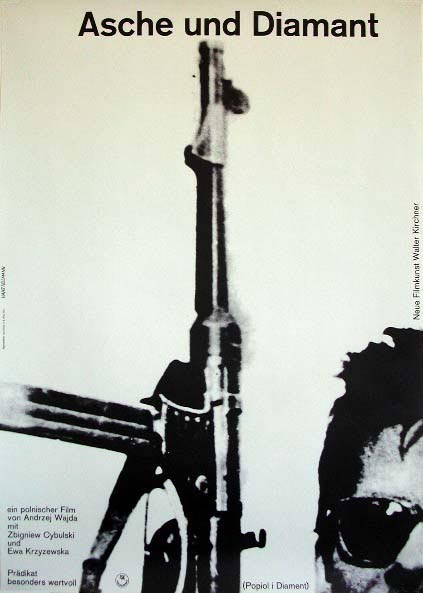
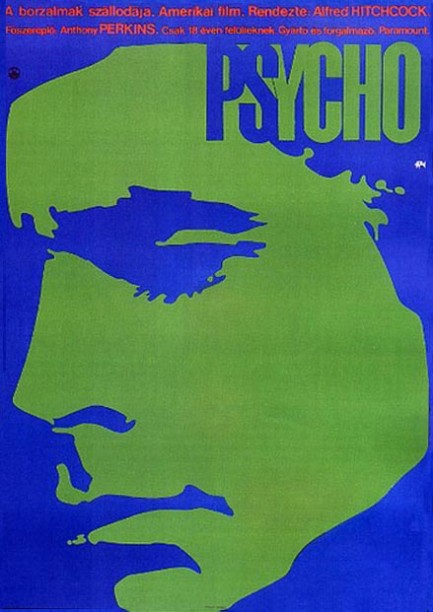
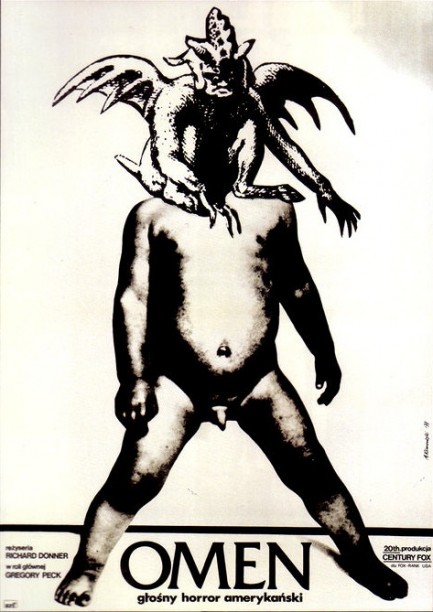
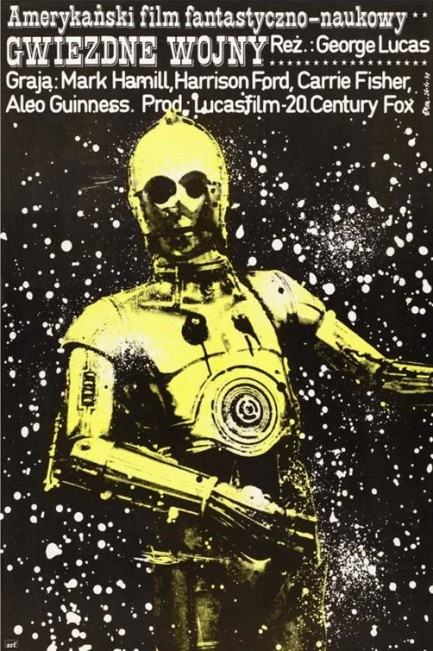
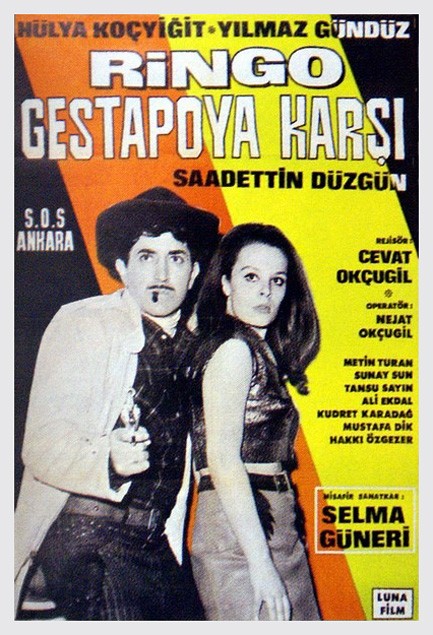

Various movie posters from Russia, Poland, Hungary, Turkey, and the former West Germany, circa ’50s, ’60s and ’70s.
| Intl. Notebook | Jun 17 2009 |

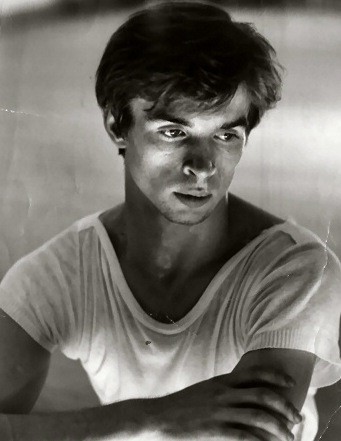
One of the more interesting pulp events of the 1960s occurred when a little-known ballet dancer named Rudolph Nureyev broke away from two Russian guards at Le Bourget airport in Paris and dashed through a security station shouting in English, “I want to be free!” His sprint into Western arms made him internationally known, rocked the dance world, and strained relations between the Soviet Union and France. It was one of the first high-profile defections, and the inside story had all the pulp elements we love best—secret romance, political intrigue, lots of headlines, and a fascinating personality at the heart of it all.
For three weeks prior Nureyev had been performing in Paris with his troupe, the Leningrad Kirov Ballet, and in his off hours enjoying the City of Light with society friends. News of these associations had filtered back to Moscow and, concerned, Soviet authorities decided to summon Nureyev back to the motherland for a chat. For two weeks they had trying to get him sent home, but Kirov directors and the Soviet embassy in Paris had been deliberately unhelpful. Finally, on the day the Kirov was supposed to board a flight to London for the next leg of their tour, two Soviet security guards intercepted Nureyev and told him he was wanted in Moscow. His dash for freedom minutes later set off a chain of events that would end with him receiving asylum in France.
Most assumed Nureyev had been thinking of defection for quite a while, but Soviet records declassified in the late 90s suggest he planned to return home. There were rumors he had fallen in love with a beautiful Chilean heiress named Clara Saint—in fact, this story was reported in much of the Western press—but in reality Nureyev was gay and had been seriously involved with a male dancer from Leningrad named Taja Kremke. It was Kremke who convinced Nureyev his talent would never flourish in the Soviet Union, but still, left to continue his tour with the Kirov, Nureyev likely would have flown home at its completion. Despite his general unhappiness, it seems to be the actual arrival of the security guards that triggered his defection. When the guards appeared he immediately knew he was in deep trouble and feared returning to Moscow meant he would not be allowed to dance anymore.
News of the defection broke huge. The West gleefully used it deride the Soviets, who had been riding high on the triumph of sending the first human into space two months earlier. Soon the Clara Saint story began to be widely reported. But it soon became obvious neither politics nor love had been the primary trigger of the event, but a burning desire to dance and live unhindered. Nureyev got his wish—residing in the West he expanded his dance repertoire and acted in motion pictures. He also took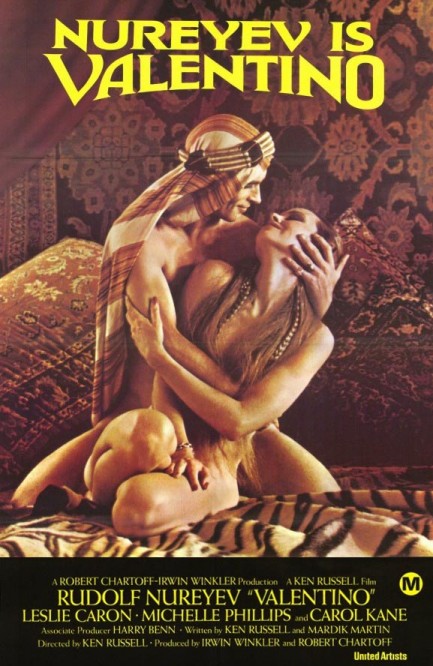
 advantage of his more permissive surroundings by pursuing relationships with famous men such as Tab Hunter, Eric Bruhn, and Anthony Perkins, and by posing for a very famous set of nude photos exposing his celebrated endowment. But he lost almost as much as he gained—he was completely cut off from his family back in Russia, and didn’t see his mother again until she was dying. Nureyev himself began to die from AIDS around 1990, and finally succumbed January 6, 1993. He was perhaps the greatest ballet dancer of the twentieth century, and the event that forever changed his life happened today in 1961.
advantage of his more permissive surroundings by pursuing relationships with famous men such as Tab Hunter, Eric Bruhn, and Anthony Perkins, and by posing for a very famous set of nude photos exposing his celebrated endowment. But he lost almost as much as he gained—he was completely cut off from his family back in Russia, and didn’t see his mother again until she was dying. Nureyev himself began to die from AIDS around 1990, and finally succumbed January 6, 1993. He was perhaps the greatest ballet dancer of the twentieth century, and the event that forever changed his life happened today in 1961.
| Vintage Pulp | Mar 31 2009 |

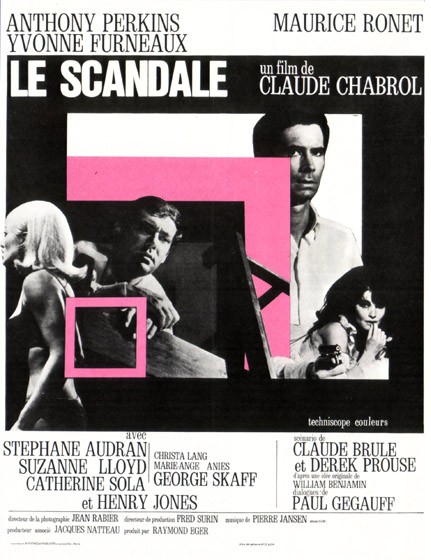
It’s difficult to imagine Anthony Perkins in any role save that of Norman Bates, but he made a number of post-Psycho films, several in France, including this oft-maligned effort by directorial legend Claude Chabrol about murder and mayhem among the feckless Parisian bourgeoisie. Perkins continued to land serious roles through the rest of the sixties and seventies, before the 1983-to-1986 triple whammy of Psycho II, Crimes of Passion and Psycho III entrenched him as cinema’s all time greatest (and twitchiest) madman. In Le Scandale he wasn’t what you’d call clinically mad, but he wasn’t exactly playing with a full deck either. Le Scandale, aka The Champagne Murders, premiered in France today in 1967.




































































